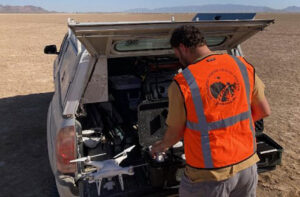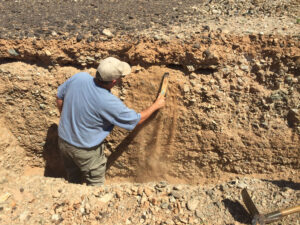Integrated Terrain Analysis Program (ITAP)
Program Description
 The highly variable nature of terrain (e.g. topography, ground/vegetation cover, soil type) can greatly impact global military operations. Mission success, including operational mobility, weapon performance, communications, and counter IED/landmine, all depend on accurate knowledge of terrain conditions. Unfortunately, accurate terrain data in areas of strategic interest is commonly limited or inaccurate.
The highly variable nature of terrain (e.g. topography, ground/vegetation cover, soil type) can greatly impact global military operations. Mission success, including operational mobility, weapon performance, communications, and counter IED/landmine, all depend on accurate knowledge of terrain conditions. Unfortunately, accurate terrain data in areas of strategic interest is commonly limited or inaccurate.
DRI developed the Integrated Terrain Analysis Program (ITAP) to advance technology to provide prompt and accurate characterization of all terrain types and conditions using a combination of space and airborne information and science-expert analysis. The objective of ITAP is to provide customer focused, science-based knowledge of terrain conditions tailored to specific military issues and challenges.
 For additional information on ITAP projects, field equipment, activities, and more, navigate to the menu on this webpage. To learn more about laboratory services, visit the Soil Characterization and Quaternary Pedology Laboratory Services webpage.
For additional information on ITAP projects, field equipment, activities, and more, navigate to the menu on this webpage. To learn more about laboratory services, visit the Soil Characterization and Quaternary Pedology Laboratory Services webpage.
CONTACT
Brad Sion, Ph.D.
Program Director
Brad.Sion@dri.edu
LAB LOCATION
Desert Research Institute
2215 Raggio Parkway
Reno, NV 89512
DIVISION
Earth & Ecosystem Sciences